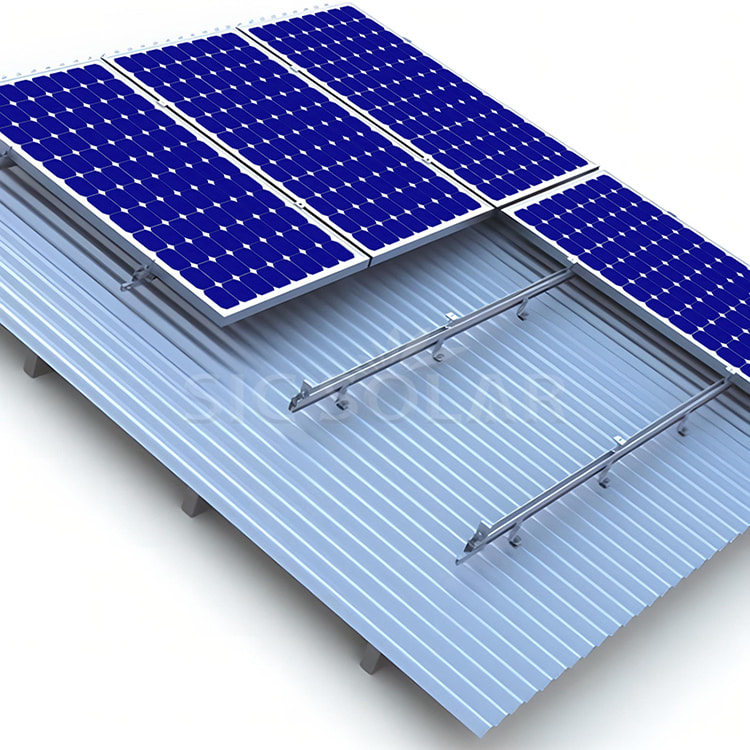Solar Panel Roof Mounts: Lightning Protection and Grounding Electrical Safety
2025-07-04
The rapid adoption of solar energy systems across residential, commercial, and industrial sectors has significantly increased the need for safe and reliable electrical systems. Among the various components of a solar energy system, the roof-mounted solar panels are exposed to diverse environmental conditions, including severe weather events like thunderstorms. One of the key safety concerns in the installation and maintenance of solar panel roof mounts is the risk of lightning strikes, which can cause severe damage to both the solar equipment and the building’s electrical systems. To mitigate these risks, appropriate lightning protection and grounding measures must be integrated into the system design.
1. Understanding the Risks: Lightning Strikes and Electrical Hazards
Lightning strikes pose significant threats to solar panel roof mounts, as they can cause electrical surges, fires, and even structural damage. A lightning strike to a building or its surroundings can transfer high-voltage energy through the electrical system, causing catastrophic damage to sensitive solar components, including inverters, wiring, and batteries. Solar panels, which are often installed at high altitudes on rooftops, may attract lightning more readily than other parts of the building, creating potential risks for both the solar array and the structure itself.
Additionally, electrical surges caused by lightning can travel through the conductive materials in the solar system, leading to equipment failure or dangerous electrical faults. Therefore, ensuring proper lightning protection and grounding is crucial to safeguard the integrity of the solar power system and the safety of its users.
2. Lightning Protection Systems: Key Components and Installation
A comprehensive lightning protection system (LPS) is essential to prevent the direct impact of lightning strikes on the solar panel roof mounts. The key components of a lightning protection system for solar installations typically include:
Air Terminals (Lightning Rods): These are metal rods installed at the highest points of the building or the solar mounting structure. Their primary function is to intercept lightning strikes before they reach the solar panels. Air terminals are connected to the down conductors, which carry the lightning current safely to the ground.
Down Conductors: These copper or aluminum cables connect the air terminals to the ground electrode system. Down conductors provide a low-resistance path for the lightning current to follow, directing it safely into the ground.
Grounding Electrode System (Ground Rods): Ground rods or electrodes are installed deep into the earth to provide a direct path for the lightning energy to dissipate. The grounding system should be designed to handle the large amounts of current from a lightning strike, reducing the risk of fires or electrical hazards.
3. Proper Grounding of Solar Panel Systems
Grounding is another critical aspect of electrical safety for solar panel installations. Proper grounding not only protects the system from lightning-induced electrical surges but also minimizes the risk of electric shock to people working on or around the solar array. There are two main types of grounding for solar systems:
System Grounding: This refers to connecting the solar power system’s electrical components (e.g., the inverter, array frame, and conductive parts) to the earth via the grounding electrode. This helps protect the system from fault currents, such as those caused by lightning, by safely diverting them to the ground.
Grounding of the Mounting Structure: In addition to the solar components, the mounting structure itself (the rails and frames that hold the solar panels) should be grounded. This ensures that the entire array is at the same electrical potential as the earth, preventing electrical shock hazards and potential damage from stray electrical currents.
4. Surge Protection Devices (SPDs)
Surge protection devices (SPDs) are essential in safeguarding the solar panel system against electrical surges, including those caused by lightning. SPDs are installed at various points in the solar electrical system, including the junction box, inverter, and main service panel, to protect sensitive components from voltage spikes.
SPDs work by diverting the excess voltage from the surge away from the solar system, thus preventing damage to the inverter, batteries, and other equipment. They are designed to operate quickly and efficiently, absorbing the surge energy and allowing the solar system to continue functioning safely.

5. Best Practices for Installation and Maintenance
To ensure the safety and longevity of the solar system, it is important to adhere to the following best practices for lightning protection and grounding:
Professional Installation: Engage a qualified solar installer or electrical contractor who is familiar with local codes and standards, such as the National Electrical Code (NEC) and UL 2703. Proper installation of the lightning protection system and grounding components is crucial to ensuring the effectiveness of the safety measures.
Regular Inspections: Regular maintenance and inspections are essential to detect wear and tear, especially in areas exposed to harsh environmental conditions. This includes checking the condition of air terminals, down conductors, grounding electrodes, and surge protection devices.
Compliance with Local Codes: Local building codes and standards should always be followed when designing and installing lightning protection and grounding systems. Non-compliance can result in safety hazards and may invalidate insurance coverage.
Avoiding Direct Connections: The solar array frame, panels, and wiring should not be directly connected to the lightning protection system. Instead, these components should be part of the grounding system to minimize the risk of electrical faults and ensure proper dissipation of lightning energy.
6. Conclusion
The integration of lightning protection and grounding measures in the installation of solar panel roof mounts is a critical aspect of ensuring the safety, reliability, and longevity of solar power systems. By implementing air terminals, down conductors, grounding electrodes, surge protection devices, and adhering to best installation practices, the risks associated with lightning strikes and electrical faults can be significantly minimized. This proactive approach not only protects the solar equipment but also ensures the safety of people and structures, making solar energy an even more secure and sustainable choice for the future.
As a professional manufacturer and supplier, we provide high-quality products. If you are interested in our products or have any questions, please feel free to contact us.


